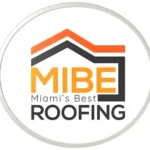The Ultimate Roof Replacement Inspection Checklist: A Homeowner’s Guide
Understanding the Importance of Roof Replacement
When it comes to maintaining a safe and secure home, the roof is often the most critical component. A damaged or worn-out roof can lead to costly repairs, mold growth, and even structural damage to the entire structure. As a homeowner, it’s essential to conduct regular inspections to identify potential issues before they become major problems. A thorough inspection can help you determine whether your roof needs replacement or just a repair. In this article, we’ll provide you with a comprehensive roof replacement inspection checklist to ensure your home’s safety and integrity.
Inspection Checklist for Roofing Materials
Before starting the inspection, make sure you have the following materials within reach:
- A flashlight or ladder for hard-to-reach areas
- A camera or smartphone to capture images of damaged areas
- A notebook and pen for notes and recommendations
- A pair of gloves and a safety harness for added protection
The first step in the inspection process is to examine the roofing materials, including:
- Shingles: Check for curled, buckled, or missing shingles, as well as granule loss, which can indicate wear and tear.
- Flashing: Inspect the flashing around chimneys, vents, and skylights for cracks, rust, or signs of wear.
- Gutters: Clean and inspect gutters for debris, sagging, or corrosion.
- Ventilation: Check the vents for clogs, blockages, or signs of wear.
- Underlayment: Inspect the underlayment for tears, cracks, or missing areas.
- Roof decking: Look for signs of rot, warping, or water damage.
Inspecting the Roof Structure and Edges
In addition to the roofing materials, it’s essential to inspect the roof structure and edges:
- Roof slope: Check the roof’s slope and pitch to ensure it’s even and properly secured.
- Roofline: Inspect the roofline for signs of damage, such as cracks, gaps, or sagging.
- Eaves and rakes: Check the eaves and rakes for gaps, cracks, or signs of wear.
- Skylights and solar tubes: Inspect these areas for signs of wear, rust, or corrosion.
- Chimneys and vents: Check for damage, cracks, or signs of wear around chimneys and vents.
Checking for Pests and Water Damage
Pests and water damage can cause significant damage to your roof:
- Check for signs of pest infestation, such as mouse droppings, squirrel nests, or bird damage.
- Inspect for water damage, such as stains, leaks, or signs of moisture.
- Check for rust or corrosion on metal flashing, gutters, and downspouts.
- Look for signs of foundation damage, such as cracks or sagging.
Inspecting the Attic and Interior
The attic and interior of your home can provide valuable insights into the condition of your roof:
- Inspect the attic for signs of water damage, mold, or mildew.
- Check for animal infestation or nesting areas.
- Inspect the interior ceilings and walls for signs of water damage or leaks.
- Check the insulation for signs of wear, damage, or proper installation.
Conclusion and Next Steps
After completing the inspection, review your notes and photos to determine the condition of your roof. If you’ve identified significant damage or wear, it may be time to consider replacing your roof. Consult with a professional roofer or contractor to discuss your options and develop a plan for replacement. Remember, a thorough inspection can help prevent costly repairs and ensure your home’s safety and integrity. freeslots dinogame telegram营销




